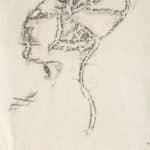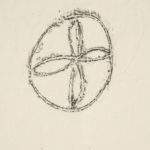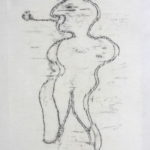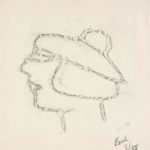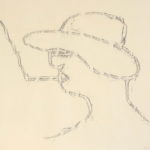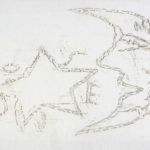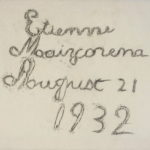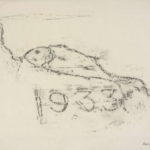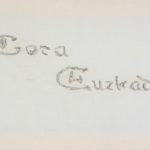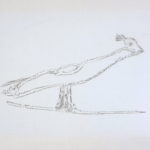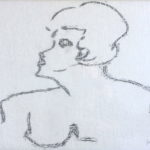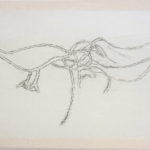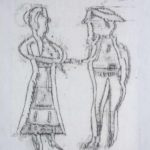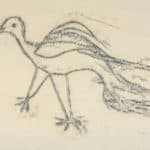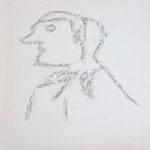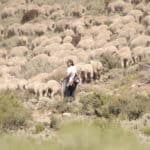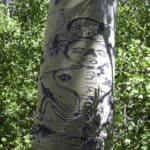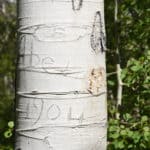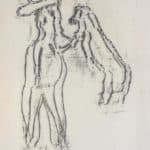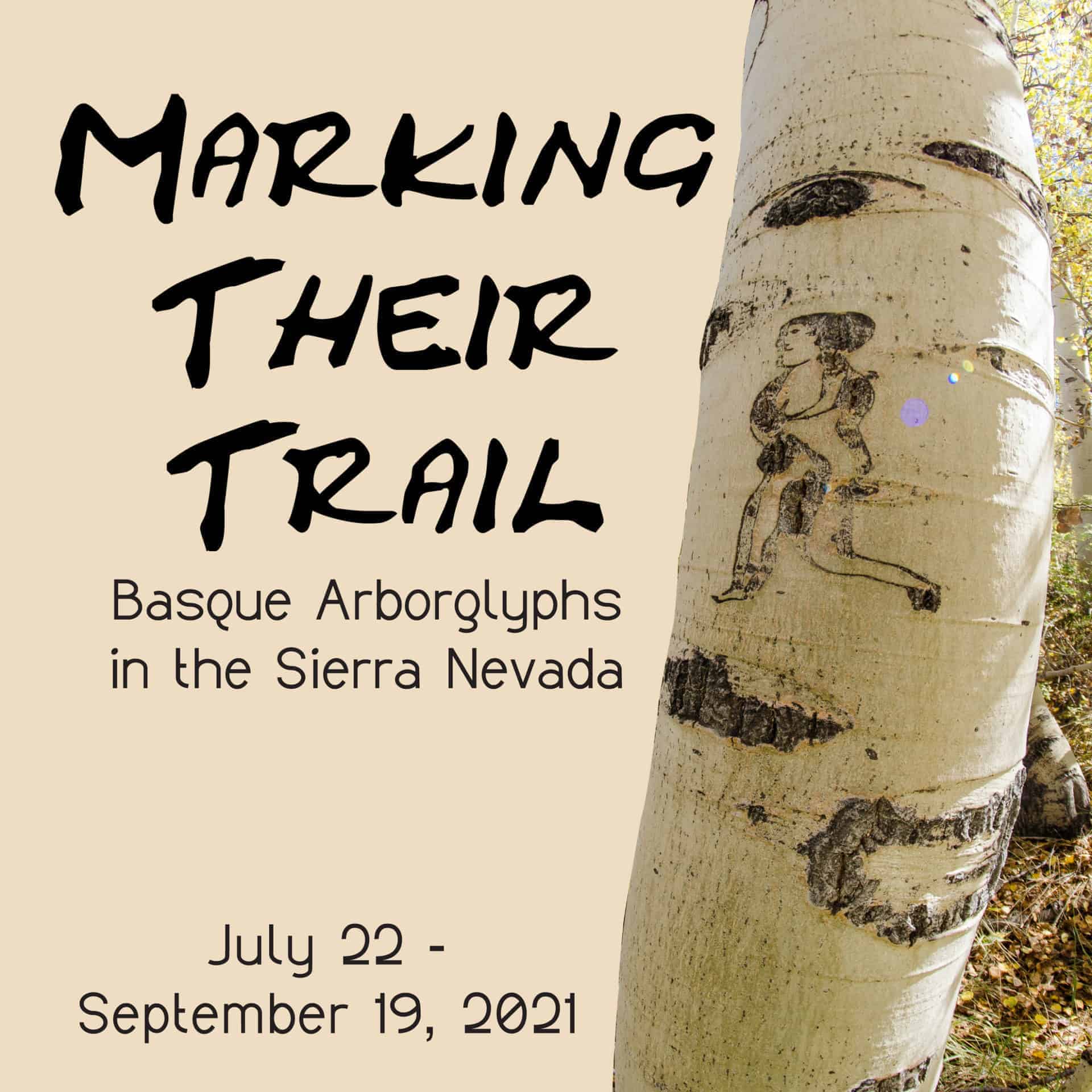Marking Their Trail: Basque Arborglyphs in the Sierra Nevada

July 22, to September 19, 2021. In the early 20th century, Basque sheepherders carved distinctive figures into aspen trees. This exhibition featured a collection of rubbings taken from these arborglyphs.
Aspen groves make for the unlikeliest galleries. High in the remote meadows of the Sierra Nevada range there are works of art secreted away by unexpected and unwitting artists. Nude figures, animals, names and dates, erotic scenes, portraits and profiles were carefully carved into the smooth white bark of young trees by Basque sheepherders during the twentieth century. The majority of known carvings were created in the 1930s and 1940s, at the height of the sheep industry in the American West. Using knives or nails like pencils, these artists carved a fine line so as not to damage the tree and to achieve the desired effect over time; as the aspens grew taller and thicker, so too did the lines of the carvings. These herders, many of whom had only recently arrived from the Basque homeland of the Pyrenees Mountains in Spain and France, literally made their mark on the American West, dropping images onto trees like a trail of crumbs as they drove flocks of sheep up the spine of unfamiliar mountain ranges.
The aspen carvings, often referred to as arborglyphs, were intended only for viewing by other sheepherders and so, when chanced upon by hikers or foresters, were largely disregarded as having any cultural, historical, or artistic significance. It wasn’t until the late 1960s that the embellished aspen groves began to garner some interest in academic circles. At a lecture in Reno in 1969, Jean and Philip Earl were first introduced to the existence of the arborglyphs languishing deep in the wild mountains. Intrigued, they began to actively seek out what they first termed “living galleries” and to experiment with methods of recording and preserving the images they found (muslin and black rubbing wax proved the best tools for the job).
The Earls spent 40 years devoted to developing an archival record of the carvings, whose existence was inextricably linked to the lifespan of the tree onto which it was etched. In short: when the tree died, so too did the art. “It was the sense of loss we felt for these familiar images that led to our search for a way to preserve them,” says Jean. In all, the Earls completed upwards of 135 rubbings, from four distinct groves in the high Sierra. Arts and Culture El Dorado has selected the most striking of these rubbings for exhibition at Confidence Firehouse Gallery in Placerville. Marking Their Trail: Basque Arborglyphs of the Sierra Nevada celebrated the unique history of immigration in the American West and a diasporic culture who, in navigating the new terrain, created a unique visual language using the landscape itself as a means of expression. Marking Their Trail opened July 22 and ran through September 19, 2021. An opening reception was held at the Gallery on Thursday, July 22, from 6:00 pm to 8:00 pm, with complimentary pintxos (Basque appetizers similar to Spanish tapas) and cold Basque cider.


